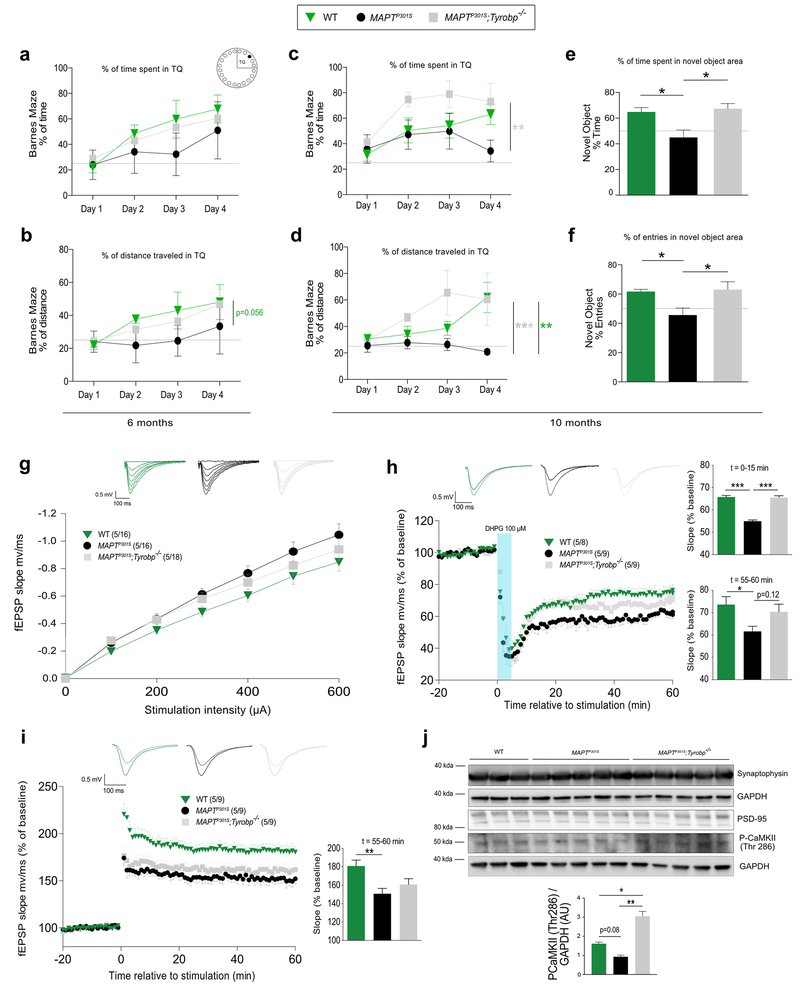Figure 5: TYROBP deficiency enhances Barnes Maze and Novel Object Recognition performances and reduces synaptic impairments.
a-b. Wildtype and MAPTP301S mice with and without knockout of Tyrobp were tested at 6 months of age in the Barnes Maze. Training was performed on 4 days with 2 trials per day, and the percentage of time (a) or distance (b) spent in the target quadrant (TQ) containing the entry for the escape zone is located were measured.
c-d. Barnes Maze testing was performed in the same cohort at 10 months of age.
e-f. The same mice used in Figure 5(a-d) were tested with the Novel Object Recognition task at 10 months of age. The percentage of time spent in the novel object area (e) as well as the percentage of entries into the novel object area (f) were measured.
The dotted lines represent 25% and 50% for Figure 5 (a-d) and (e-f) respectively. n=6 (WT), n=7 (MAPTP301S) or n=7 (MAPTP301S;Tyrobp−/−) mice per group. Error bars represent the means ± SEM. A two-way ANOVA corrected for multiple comparisons by a Tukey’s post-hoc test was used for Figure 5(a-d). A one-way ANOVA followed by a Tukey’s post-hoc test was used for Figure 5(e-f), *p<0.05; **p<0.01; ***p<0.001. Males and females were used for experiments, and results were combined for analysis.
g. Input-output relationship measuring basal synaptic function in 11-month-old wildtype (WT; n=5 mice; 16 recordings), MAPTP301S (n=5; 16 recordings) and MAPTP301S;Tyrobp −/− (n=5 mice; 18 recordings) mice.
h. Long-term depression (LTD) was induced using 3,5-dihydroxyphenylglyine (DHPG) in mice of the same genotype series described above: WT (n=5 mice; 8 recordings), MAPTP301S (n=5 mice; 9 recordings) and MAPTP301S;Tyrobp −/− (n=5 mice; 9 recordings) mice. Mean values for the first 15’ after DHPG induction or for the last 5’ after DHPG induction are presented in the panels on the right side of the figure.
i. Synaptically induced long-term potentiation (LTP) over 60 minutes was induced by high-frequency stimulation in mice of the same genotype series described above: WT (n=5 mice; 9 recordings), MAPTP301S (n=5; 9 recordings) and MAPTP301S;Tyrobp −/− (n=5 mice; 9 recordings) mice. For panels A to C, representative traces are shown on the top.
j. Western blots for synaptophysin, calcium/calmodulin-dependent protein kinase II (CaMKII) phosphorylated on threonine 286, PSD-95; and GAPDH were performed on extracts of prefrontal cortex from the same cohorts: WT (n=3), MAPTP301S (n=5) and MAPTP301S;Tyrobp −/− (n=5). Extracts were prepared from samples of prefrontal cortex removed prior to slicing for the electrophysiological recordings.
Error bars represent means ± SEM. Males and females were used for experiments, and results were combined for analysis. Statistical analyses were performed using a one-way ANOVA followed by a Tukey’s post-hoc test, *p<0.05; **p<0.01; ***p<0.001.

